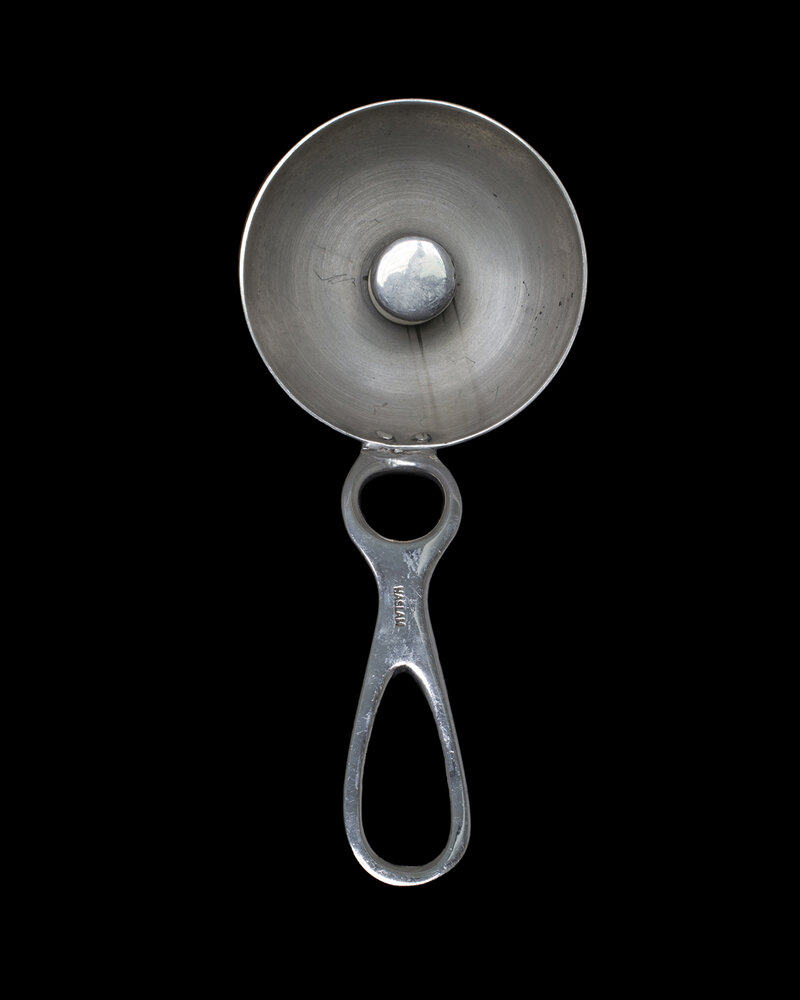We are just delighted to feature Lindsey Beal. A photographic artist and educator, Lindsey's works have been seen in exhibits at galleries, museums and universities around the nation. Institutions include the Griffin Museum of Photography, Danforth Museum and the University of Wisconsin, Osh-Kosh, as well as numerous publications including the OD review, Lenscratch and Don't Take Pictures.
Parturition
Lindsey Beal’s work is an ideal example of when an artist has a solid understanding of the history that has shaped it, and Lindsey’s work bridges the gap between historical and contemporary. I first saw Lindsey’s Venus Series while I was working on my own research on nineteenth-century women photographers and their relationship to objects in domestic space, and the way in which she was able to translate similar views on women’s history into unique photographic objects struck a chord. In many ways, Lindsey’s work demystifies the past. Her reappropriation of objects—contraceptive devices, corsets, gynecological tools—elevates them to works of art while reintroducing them in a way that makes them relevant and topical.
Context is crucial in the works on view at Aspect Initiative this month. Parturition (the action of giving birth) comments on the contradictions and complications, and racism and sexism, in medical history, and how what may seem firmly in the past is still a reality. On their own, they are bulbous forms and geometric abstractions, often visibly tools or medical devices, but with their true meaning largely unclear. Parturition is a photographic archive—the image is vital, but so are text, and presentation—and one must take in the project as a whole. Lindsey’s previous series follow a similar framework—visually, contraceptive devices form intricately patterned wallpaper, sculpted figures become ideals frozen in a bell jar, intimate appliances are presented in velvet-lined union cases, and venereal diseases are ethereal cyanotype abstractions floating in petri dishes. Yet, each of these series provides a rich context that serves as a constant reminder of the fraught nature of the debate over women’s control of their own bodies.
Presentation is a vital component of Lindsey’s work, because it helps to translate how her subjects were approached in their original context. The works of Parturition are presented as early-twentieth century glass slides. Lantern slide displays combined the practical applications of photography as a teaching tool with a sense of illusion linked to the magical perceptions of photography which were still prominent in the early twentieth century. To contemporary eyes, time spent with Lindsey Beal’s work is both a lesson in history and an appreciation of the intricacies of a photographic object.
- Jessica Roscio, Curator, Danforth Art Museum
Parturition is a photographic archive and written history of obstetric and gynecological tools: their appearance, development, and how they have or have not changed.
Statement
Parturition is a photographic archive and written history of obstetric and gynecological tools: their appearance, development, and how they have or have not changed.
Obstetrical and gynecological history is full of contradictions and complications. Medical history has been fraught with racism and sexism—tools were often forcibly tested on the poor, the enslaved, and sex workers. Conversely, without these improved tools, many women would have had to deliver unwanted pregnancies or died in childbirth. On the one hand, male doctors interceded into the female realm of midwifery and delivery; on the other hand, doctors saved the lives of women and infants in delivery.
When I set out to photograph these items in various medical libraries, I expected to find gruesome tools; instead, I often found early forms of implements still in use today such as forceps and speculums. Some were created pre-germ theory and used materials such as leather, wood, horn or ivory. Others more closely resemble and use materials familiar to us today.
By photographing the tools digitally and printing them to replicate twentieth century glass educational slides, I intend to connect historical uses and developments with contemporary tools and practices. This allows us to examine how women's reproductive health and medicine evolved, yet still remains the same.
This project was made with the assistance of the Duke University History of Medicine Travel Grant. Parturition would not be possible without the assistance of the librarians and staff at Brown University’s John Hay Library, Duke University’s David M. Rubenstein Rare Book & Manuscript Library, Harvard University’s Countway Library of Medicine and Yale University’s Cushing/Whitney Medical Library.
Lindsey Beal
Lindsey Beal
Bio
Lindsey Beal is a photo-based artist in Providence, Rhode Island where she teaches at Rhode Island School of Design, Massachusetts College of Art & Design and New Hampshire Institute of Art's MFA program. She has an M.F.A. in Photography from the University of Iowa and a Certificate in Book Arts at the University of Iowa’s Center for the Book.
Her work combines historical & contemporary women’s lives with historical photographic processes. She is interested in the photograph as object and often includes sculpture, papermaking and artist books into her work.
Her work has been shown at national museums, galleries & universities, including recent solo shows at the Griffin Museum of Photography, the University of Wisconsin-Oshkosh, and the Danforth Art Museum. She has been featured on Lenscratch, Don't Take Pictures, OD Review, LensCulture, and Light Leaked and published in Diffusion, Art New England, The Hand, View Camera and 500 Handmade Books Volume Two. In 2016, she earned a travel grant from Duke University, was a finalist for the Barbara Deming Memorial Fund and was one of Critical Mass’s Top 200 finalists.
Visit Lindsey












